Grass can be a beautiful addition to any garden, but it can also be a huge pain to maintain. If you’re looking for ways to stop grass from growing in your garden, you’ve come to the right place. In this article, we will discuss some of the most common methods for preventing grass from taking over your garden. We’ll also provide some tips for keeping your garden looking beautiful and weed-free!
How To Kill Grass That Is Already Growing In Your Garden
The first step is to mow your lawn as short as possible. You don’t want to Scalp the grass, just get it really short. This will help the Roundup penetrate the plant better.
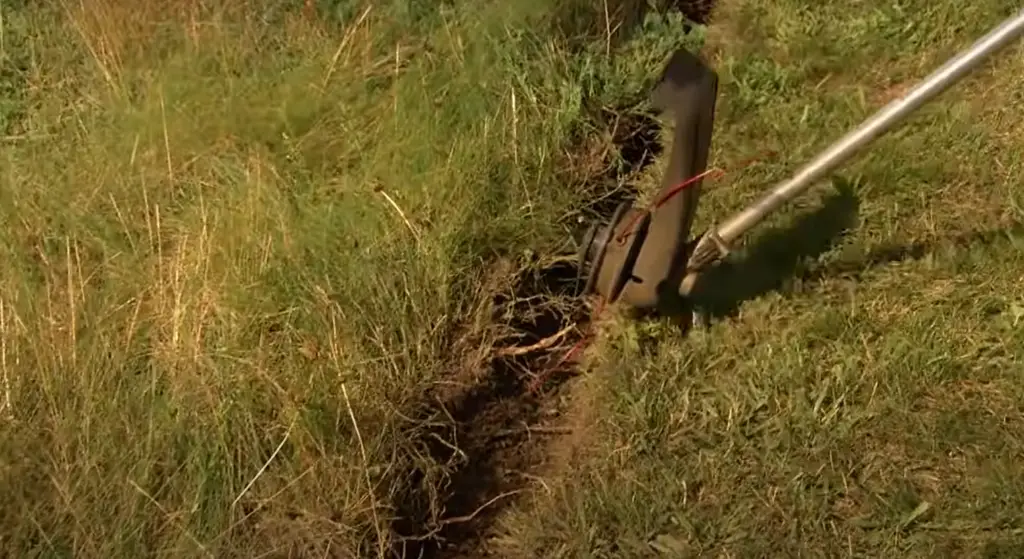
Next, you’ll need to add a surfactant to the Roundup. A surfactant is something that lowers the surface tension of water so it can spread out and cover more area. You can buy a commercial Roundup with a surfactant already added, or you can add dish soap to regular Roundup.
Once you have your mixture ready, put on some gloves and start spraying! Make sure to get all the leaves of the plant, especially the underside where most of the photosynthesis takes place.
You should start to see results within a few hours, but it may take a few days for the plant to die completely. If you don’t see any results after a week, you can give it another treatment. Just be sure to wait at least two weeks between treatments.
Remove surface vegetation
The first step is to remove all the surface vegetation from your garden area. This includes grass, weeds, and any other plants that are growing in the space. You can do this by hand or with a tool like a weed whacker. Once all the vegetation is removed, you should till the soil to loosen it up. This will make it easier for new plants to take root and grow in space.
If you have a large garden area, you may want to consider renting a tiller from a local hardware store. This will make the work go much faster and save you some back pain!
After you’ve removed all the vegetation and loosened up the soil, you’re ready to start planting your new garden. Be sure to choose plants that are appropriate for the space and will not require a lot of maintenance.
Spray The Grass With Vinegar
Another way is to spray it with vinegar. This method is best for small areas, as it can be time-consuming to treat a large space. You’ll need to purchase a gallon of white vinegar and mix it with water in a ratio of one part vinegar to three parts water. Then, simply spray the mixture on the grass and weeds in your garden.
The acidity in the vinegar will kill the plants, so you won’t have to worry about them coming back. Just be sure not to get any on your other plants, as it will kill them too!
Pour Boiling Water On The Grass
For a more extreme method, you can pour boiling water on the grass in your garden. This will definitely kill the plants, so be careful not to get any on your other plants or yourself! You’ll need to boil a pot of water and then carefully pour it over the grass.
This method is best for small areas, as it can take quite a while to boil enough water for a large space. Be sure to keep an eye on the pot so it doesn’t boil over.
Pouring boiling water on the grass is a great way to stop it from growing, but be careful not to damage any of your other plants or yourself!
Cover the Grass
Mulch is a great way to stop grass from growing in your garden. You can find mulch at most hardware stores or online. Be sure to choose a thick layer of mulch, as this will prevent the light from reaching the grass and inhibiting its growth.
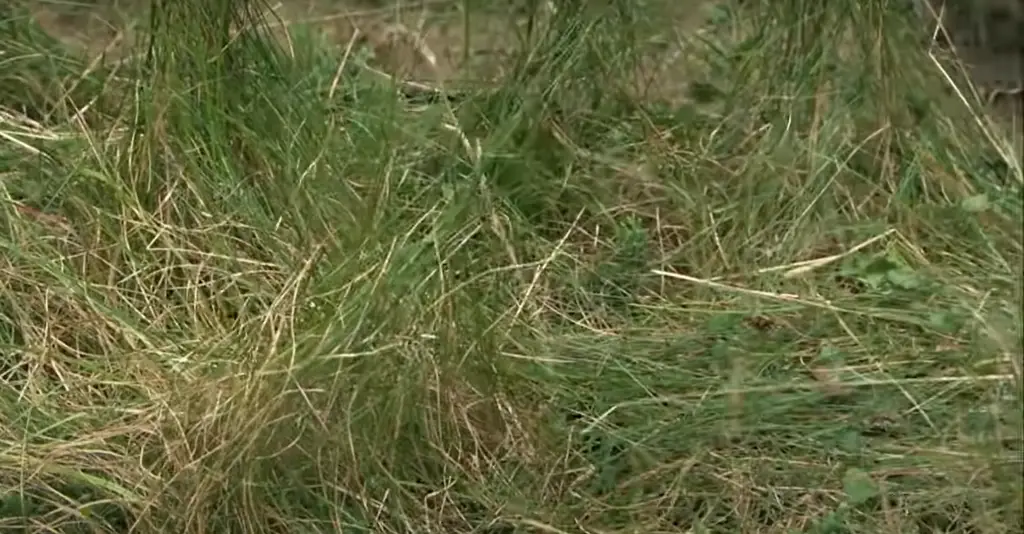
You can also use other materials like straw or hay to cover the grass. Simply lay down a thick layer of whatever material you’re using and make sure it’s completely covering the grass. This will prevent the light from reaching the plants and stopping their growth.
Mulch is an excellent method to keep grass from growing in your garden without using any pesticides. It’s also a great way to add some extra nutrition to your soil!
Kill off the underground runner system
To really stop grass from growing in your garden, you need to kill off the underground runner system. This is the network of roots and stem that allows the plant to spread and grow. You can do this by applying a herbicide to the area. Be sure to follow the instructions on the label carefully, as you don’t want to damage your other plants.
Applying a herbicide is the most effective way to stop grass from growing in your garden. It may take a few applications to completely kill off the underground runner system, but it will be worth it in the end!
Block the lawn from invading your garden
If you have a lawn that’s encroaching on your garden, you’ll need to take measures to stop it from invading. The best way to do this is to put up a physical barrier between the two areas. You can use something like chicken wire or landscape fabric. Simply bury it a few inches into the ground so the grass can’t grow through it.
Putting up a physical barrier is the best way to stop grass from growing. It may take some time and effort to put up, but it will be worth it in the end! Thanks for reading! I hope this guide was helpful! Grass can be a pesky problem, but with these tips, you’ll be able to keep it under control! [1]
How To Prevent Grass From Growing In Your Garden
The above methods are great for stopping grass from growing in the garden, but what if you want to prevent it from growing in the first place? The best way to do this is to use a pre-emergent herbicide. This type of herbicide will kill the seeds before they have a chance to germinate and grow. Be sure to apply it early in the season, before the grass has a chance to start growing.
Pre-emergent herbicides are a great way, but they can be expensive. If you’re looking for a more budget-friendly option, consider using mulch.
Cover The Soil With Mulch
Mulch helps to keep weeds at bay and aids in the retention of moisture in the soil.

You can also use newspapers or black plastic sheets as a barrier between the soil and the seeds. This will prevent them from germinating and growing.
Mulch is any material that covers the ground. It can be organic or inorganic. Some common mulches include straw, hay, wood chips, and stones. You can find mulch at most hardware stores or online.
When choosing a mulch, make sure it is appropriate for your climate. You should also choose a mulch that will not invade your other planting beds.
Once you have selected a mulch, spread it evenly over the area. Be sure to follow the instructions on the bag. Most mulches need to be replaced every year.
Straw
Straw is another great option for preventing grass from growing. It’s also a great way to add organic matter to the soil. Be sure to remove it after a few weeks, or it will start to decompose and become part of the soil.
Grass clippings
If you’re looking for a natural way to keep grass from growing, then using grass clippings is a great option. Simply spread a layer of grass clippings over the area where you don’t want the grass to grow, and it will act as a barrier. The grass clippings will eventually decompose and add nutrients to the soil, so it’s a win-win!
Another benefit of using grass clippings is that it will help to smother any existing weeds, which will make it easier to keep your garden weed-free.
If you have a lot of grass clippings, you can also compost them. This is an excellent way to recycle them and turn them into something beneficial for your garden.
Grass clippings are an effective way, and they’re also good for the environment. So next time you mow the lawn, don’t throw away those grass clippings – spread them in your garden!
Chopped leaves
If you have a lot of leaves, chop them up before using them as mulch. This will speed up the decomposition process and help to prevent the leaves from blowing away.
Chopped leaves also make it easier for water and air to reach the soil, which is important for plant growth.
To chop leaves, use a lawn mower or a garden shredder. If you don’t have either of these, you can simply chop the leaves with a spade or shovel.
Manure
You can also use manure.
To make your own manure, you will need to compost organic materials such as leaves, grass clippings, and kitchen scraps. Once you have enough compost, you can spread it over the area where you want to stop grass from growing.
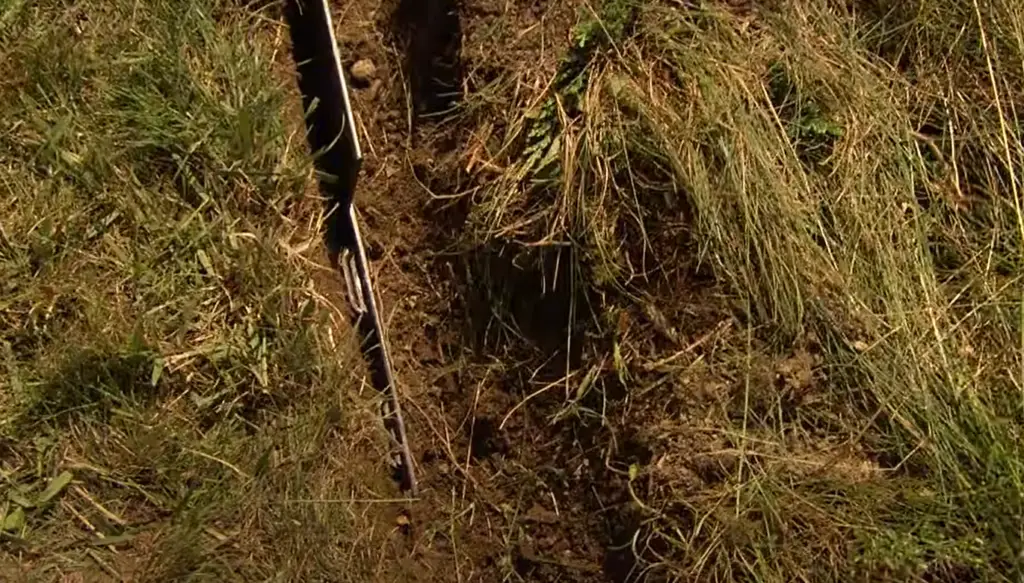
Another benefit of using manure is that it will improve the drainage in your garden soil. This is important because poor drainage can lead to waterlogging, which can damage plant roots. Manure will also help to aerate the soil, which is essential for healthy plant growth.
Compost
Using compost to eliminate grass from your yard is one of the most successful methods. Compost will help to improve the quality of your soil, making it less hospitable for grass seedlings. You can either purchase compost or make your own. If you choose to make your own, you’ll need to gather organic materials like leaves, fruit peels, and vegetable scraps. Once you have a good amount of organic material, you can start composting by layering it in a bin with some soil. Be sure to turn the compost regularly so that it decomposes evenly. After a few weeks, you should have rich, dark compost that’s perfect for adding to your garden beds.
If you’re not interested in making your own compost, you can purchase it from a garden center or online.
Mulch will help to keep the soil moist and will also add nutrients as it breaks down over time.
Cover The Soil With Cardboard
To smother weeds and hinder grass from developing in the garden, cover the soil with cardboard or many layers of newspaper. This method is often used by farmers and homesteaders to prepare an area for planting.
Cardboard and newspapers block out sunlight, which is necessary for seeds to germinate. By covering the ground with cardboard or newspapers, you can create a barrier.
To use this method, lay down a layer of wet cardboard or newspaper over the area where you don’t want the grass to grow. Finally, cover the cardboard or newspaper with a thick layer of mulch, such as hay or straw.
The mulch will hold the cardboard or newspaper in place and help to keep it from blowing away. It will also add nutrients to the soil as it breaks down.
This method is simple and effective, but it does have a few drawbacks. First, it can be time-consuming to cover a large area with cardboard or newspaper. Second, you will need to replenish the mulch every few months as it breaks down. Finally, this method will not work if the ground is already covered in grass or weeds.
Cover The Soil With Landscape Fabric
Grass can be kept out of a garden by covering the soil with landscape fabric to block out the sunlight that grass needs to grow. You can find landscape fabric at most hardware stores or online.
Build Raised Beds
Raised beds are another approach to keeping grass out of a garden. Raised beds are elevated areas of soil that are separated from the rest of the lawn. This prevents grass from spreading into your garden beds.
You can build raised beds out of lumber, bricks, or stones. You can also find pre-made raised bed kits at most home improvement stores.
Another benefit of raised beds is that they improve drainage. This is important because standing water can kill plants.
If you live in an area with heavy rains, you may want to consider building elevated beds. This will keep your plants safe from floodwaters.
Plant Cover Crops
Cover crops are plants that are grown to cover the soil. They protect the soil’s health and improve its erosion resistance. Cover crops also compete with weeds for resources like sunlight and water.
Some common cover crops include clover, alfalfa, and rye grass. You can find these plants at most nurseries or online.
Once you have selected a cover crop, sow the seeds in early spring. Be sure to follow the instructions on the seed packet. Most cover crops need to be mowed down before they flower.
You can add the cover crop debris to your compost pile. This will provide nutrients for your other plants.
Compact the Soil
This will make it difficult for grass roots to penetrate the soil. You can use a hand tamper or a plate compactor to compact the soil.
Make sure to compact the entire area that you want to keep free of grass. Once you have compacted the soil, you can add a layer of mulch.
Lay Down Patio Stones Or Gravel
This will form a barrier that grass cannot penetrate. Patio stones or gravel may be obtained at most home improvement stores.
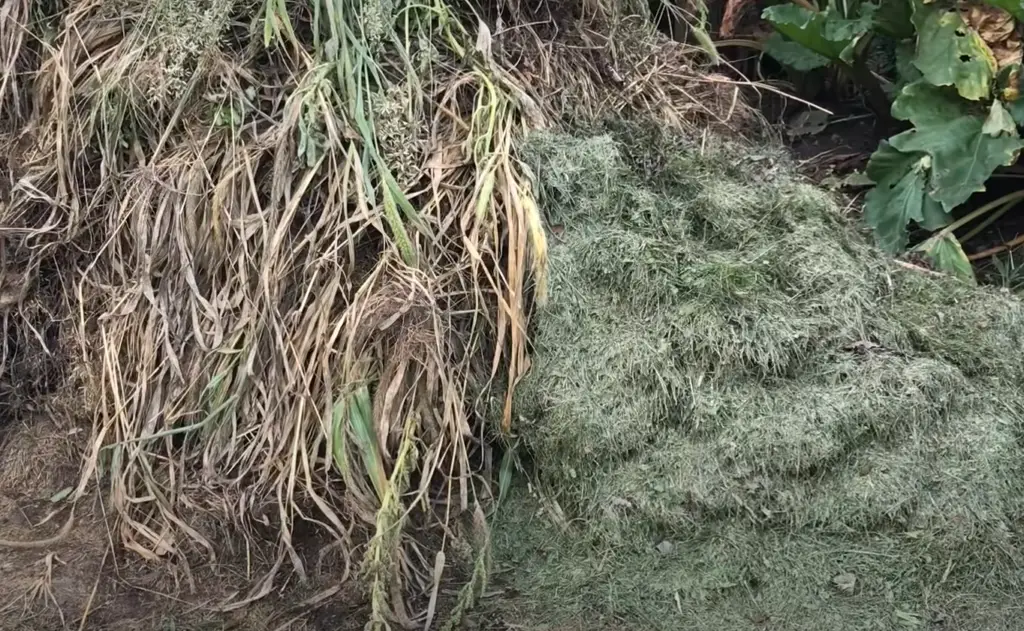
After laying down a layer of landscape fabric to keep the material from sinking into the soil, add the stones or gravel.
You may then add a layer of mulch on top once the stone or gravel has been laid down. This will help to keep the area free of weeds and grass. [2]
Caution About Herbicides
The use of herbicides is the most common way to stop grass from growing, but it is important to be cautious when using them. Some herbicides can harm other plants and animals, so it is important to read the labels carefully and follow the directions. Herbicides should only be used as a last resort after all other methods have failed.
Be sure to apply the herbicide in a well-ventilated area. Keep children and pets away from areas where herbicides have been applied. If you accidentally get herbicide on your skin or in your eyes, rinse immediately with water and seek medical attention if necessary.There are many different types of herbicides available, so be sure to choose one that is specifically designed to kill the grass. Be sure to follow the directions carefully and only use the herbicide as directed.
Comparative Analysis: Strategies to Halt Grass Growth in Your Garden
Maintaining a garden free from relentless grass growth requires effective strategies. This table presents a comparative analysis of various indicators that assess different methods to stop grass from encroaching on your garden’s beauty and functionality.
| Method | Effectiveness | Cost | Environmental Impact | Maintenance |
|---|---|---|---|---|
| Chemical Herbicides | High | Moderate | High (potential harm to non-target plants and soil) | Low (requires periodic reapplication) |
| Landscape Fabric | Moderate | Low | Low (may inhibit beneficial organisms) | Low (may need replacement after a few years) |
| Solarization | High | Low | Low (temporary disruption to soil ecosystem) | Moderate (requires careful setup and monitoring) |
| Manual Removal | Low | Low (labour-intensive) | Low | High (frequent weeding necessary) |
| Mulching | Moderate | Low to Moderate | Low (may improve soil health) | Moderate (topping up mulch periodically) |
Explanation:
- Chemical Herbicides: While effective, chemical herbicides come with potential harm to non-target plants and the soil’s health. They provide a high initial effectiveness but require regular reapplication.
- Landscape Fabric: This method offers moderate effectiveness in halting grass growth. It involves low costs and has a minor environmental impact, but might hinder beneficial soil organisms and require replacement over time.
- Solarization: Highly effective, solarization involves minimal cost and temporary disruption to the soil ecosystem. However, careful setup and monitoring are necessary for success.
- Manual Removal: While low in effectiveness, manual removal is labor-intensive and demands frequent weeding. It has a low environmental impact but requires consistent effort.
- Mulching: Mulching offers moderate effectiveness and can enhance soil health. It requires periodic topping up but has a reasonable cost and environmental impact.
By evaluating these strategies across different indicators, you can make an informed decision on how to effectively prevent grass from taking over your garden.
FAQ
How do you stop grass from growing?
The most effective way is to use herbicides. Glyphosate-based products are the most commonly used herbicides for this purpose. You can find glyphosate-based products at most hardware stores or online.
Another way is to physically remove it. This can be done by hand-pulling, tilling, or using a weed whacker. However, this method is only temporary and the grass will eventually grow back. [3]
What are some tips for preventing grass from growing?
Some tips for preventing grass from growing include:
- Mowing regularly – This will help prevent seed heads from forming and spreading.
- Applying mulch – Mulch inhibits the germination of grass seeds.
- Pulling weeds – This prevents the spread of grass.
- Using herbicides – Herbicides can be used as a preventative measure to stop grass from growing. [4]
How do I get rid of grass but not plants?
One of the best ways to eliminate grass but not plants is to use a herbicide that specifically targets grasses. There are many different kinds of herbicides available, so be sure to read the label carefully to make sure you’re using the right one.
Another way is to physically remove it by hand. This can be a lot of work, but it’s very effective.
If you have a large area of grass that you want to eliminate, you may want to consider renting a sod cutter. Sod cutters are specialized machines that can quickly and easily remove large areas of grass.
Can I use mulch to prevent grass from growing in my garden?
Yes, using mulch is an effective way to inhibit grass growth in your garden. Apply a layer of mulch around your plants to smother existing grass and prevent new growth by blocking sunlight and access to nutrients.
What are some natural methods to stop grass from encroaching on my garden?
Natural methods include using cardboard or newspaper layers to smother grass, employing vinegar or boiling water to kill grass, and creating physical barriers like edging or trenches to prevent grass from spreading.
Is it possible to use herbicides to control grass growth in my garden?
Yes, you can use herbicides specifically formulated for grass control. Make sure to carefully follow the instructions on the product label and apply them only to the grass, avoiding contact with desired plants.
Can I employ landscaping fabric to prevent grass from growing in my garden?
Landscaping fabric can be a useful tool in preventing grass growth. Lay the fabric over the garden bed, cut holes for your plants, and cover it with mulch to create a barrier against grass.
Are there specific gardening techniques that help in stopping grass from taking over my garden?
Intensive gardening techniques like raised beds or square foot gardening can help control grass growth by concentrating plants in defined areas and reducing the space available for grass to establish itself.
What about using a grass barrier or border to keep grass out of my garden?
Installing a physical barrier, such as metal, plastic, or wood edging, can create a clear separation between your garden and the surrounding grass, preventing its encroachment.
Can regular mowing and maintenance help in preventing grass from growing too much?
Yes, consistent mowing at a higher height and maintaining the edges of your garden can help keep grass from spreading into your garden beds.
Are there specific ground covers I can plant to prevent grass growth?
Yes, ground covers like creeping thyme, vinca minor, or ornamental grasses can be planted strategically to outcompete and suppress unwanted grass growth.
How can I create a no-grow zone to protect certain areas of my garden from grass?
You can create a no-grow zone by laying down a combination of materials such as cardboard, landscape fabric, and mulch to create a barrier that prevents grass from infiltrating specific areas.
What steps can I take during garden planning to minimize grass intrusion?
During garden planning, ensure proper spacing between plants, use effective mulching techniques, and consider installing physical barriers to prevent grass from growing where you don’t want it.
Useful Video: How to Keep a Lawn and Garden Beds Separate | This Old House
Conclusion
So, there you have it! There are many different ways to stop grass from growing in your garden. Choose the method that best suits your needs and space! With a little bit of effort, you can have the garden of your dreams! Happy gardening!
References:
- https://greenupside.com/how-to-prevent-grass-from-growing-in-your-garden/
- https://www.lilydaleinstantlawn.com.au/how-to/common-lawn-problems/how-do-i-stop-my-lawn-growing-into-my-garden-beds
- https://www.gardeningknowhow.com/plant-problems/weeds/how-to-kill-grass-naturally-kill-unwanted-grass-in-your-yard.htm
- https://www.masterlawninc.com/blog/tips-keeping-grass-out-mulch-rocks-flower-beds-memphis-tn-northern-ms





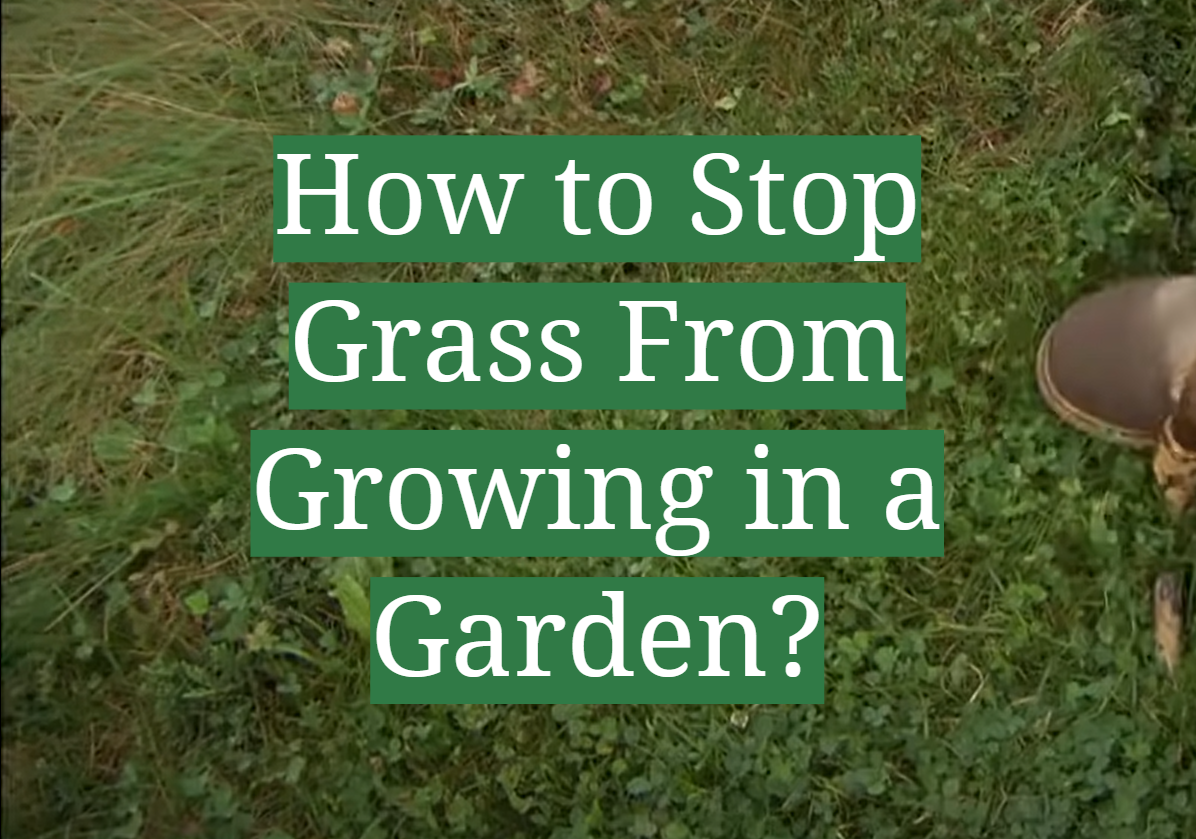



Leave a Reply
View Comments